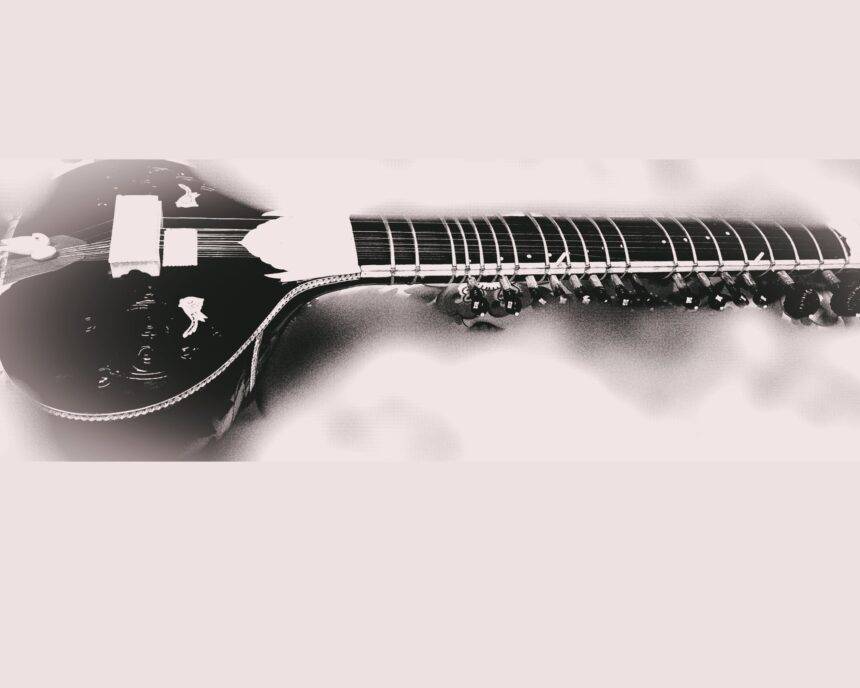“Any complex activity, if it is to be carried on with any degree of virtuosity, calls for appropriate gifts of intellect and temperament. If they are outstanding and reveal themselves in exceptional achievements, their possessor is called a ‘genius’.”- Carl von Clausewitz.
When asked about the duration of practice, Ustad Vilayat Khan once shared a profound perspective with my guruji, Pandit Sanjoy Bandopadhyay said –
”Riaz tab tak karna hai jab tak nahi aajata” aur wohi karna hai jo nahi ata”.
The essence of this statement lies in the idea that practice should continue until it becomes an inherent part of one’s being. Mere surface-level practice is not enough; true practice entails delving deep into the art form, internalizing its intricacies, and making it an integral part of oneself. This perspective emphasizes the importance of dedicated and relentless practice. It suggests that practice should continue until it becomes effortless, intuitive, and ingrained in the musician’s muscle memory and consciousness. The key element that distinguishes a performer as virtuous is engaging in the right kind of practice.
The pursuit of virtuosity is the primary objective for every artist. Typically it refers to the exceptional skill, talent, or mastery displayed by a person in a particular field or activity. It is often associated with a high level of technical proficiency, precision, and artistry. Virtuosity is commonly used in reference to music, where it describes the ability of a musician to perform with extraordinary skill and dexterity. Virtuosity in sitar music extends beyond technical proficiency. It also involves the ability to improvise and create new musical ideas within the framework of the raga. A virtuoso sitarist possesses a vast repertoire of melodic motifs, variations, and improvisational techniques, allowing them to weave intricate and captivating musical narratives during their performance. It combines technical excellence, expressive prowess, improvisational skills, and a deep understanding of the musical tradition. It represents the highest level of skill and artistry in sitar playing, captivating audiences with its virtuosic display and emotional depth. Virtuous sitar players across generations have exhibited exceptional technical prowess and a profound capacity for emotional expression. Their rigorous training, intensive riyaz (practice), and countless hours refining their skills have resulted in an extraordinary command over the instrument. This enables them to effortlessly navigate intricate melodies, deliver stunning improvisations, and convey a wide range of emotions through their playing.
Their virtuosity lies in their ability to merge technical brilliance with deep musicality, captivating audiences with their mesmerizing performances. Beyond technical skills, virtuous artists possess a deep understanding of the nuances and emotions inherent in their art. They have the ability to convey a wide range of emotions, interpret the material creatively, and captivate audiences with their expressiveness. Virtuosos often go beyond technical proficiency and infuse their performances with a unique artistic flair and personal style. Artists who push the boundaries of their field, introduce new techniques or approaches, and bring fresh perspectives to their art are often considered virtuosos. They have a unique ability to think outside the box, experiment, and create groundbreaking work. This includes an understanding of dynamics, timing, articulation, and the capacity to convey the intended emotions of the music. Virtuosic artists often possess an engaging and charismatic stage presence. They have the ability to captivate and connect with their audience through their performance. This includes elements such as stage charisma, communication, confidence, and an innate ability to command attention and evoke powerful responses from their listeners. In addition to the standardization of tradition and gharana, virtuosity in sitar playing also encompasses the personal identity of the individual sitar players. While tradition and gharana provide a framework and foundation, virtuosos bring their unique artistic expressions, individuality, and creative perspectives to their performances. This personal identity distinguishes them from one another and adds depth and richness to the sitar-playing tradition. Mentioning specific artists in this context would overlook the numerous great artists who have contributed to the illustrious tradition of sitar playing through their virtuosic performances. However, within each gharana or musical tradition, there are notable instances of sitar players showcasing virtuosity in their playing.
The comparison between tradition and skill in the context of music raises an interesting dynamic. While both elements are essential, they represent different aspects of musical expression. Tradition refers to the established customs, practices, and artistic conventions that have been passed down through generations. It encompasses the rich heritage, repertoire, and stylistic elements that define a particular musical culture or genre. Tradition provides a foundation for musicians, offering a framework from which they can learn, understand, and connect with the roots of their music. It preserves the authenticity and historical significance of a musical tradition, ensuring its continuity and keeping it alive for future generations. On the other hand, skill refers to the technical proficiency and mastery of an instrument or musical technique. It represents the individual’s ability to execute complex musical passages, and demonstrate control, precision, and creativity in their performance. Skill is developed through rigorous practice, discipline, and honing one’s abilities to navigate the intricacies of music. It enables musicians to explore their artistic vision, interpret compositions, and express emotions effectively. A skilled musician possesses the technical ability to respect and honor the tradition while also bringing their unique perspective and creative expression to the music. Ultimately, tradition and skill are two sides of the same coin in music. Preserving tradition ensures the continuity of cultural heritage, while skill enables musicians to contribute to the evolution and advancement of musical expression. The harmonious interplay between tradition and skill allows for the exploration of new musical territories while maintaining a strong connection to the roots and essence of the music.
The virtuous sitar players from previous generations have left an indelible mark on the musical landscape, which distinguishes them from many contemporary sitar players. Their significant contributions, influential recordings, and transformative collaborations have helped shape the perception and understanding of sitar music. Their musical legacies inspire and influence generations of sitar players who strive to follow in their footsteps, ensuring their enduring influence on the contemporary sitar-playing tradition. While there are undoubtedly many talented contemporary sitar players who demonstrate virtuosic abilities, the distinctiveness of virtuous sitar players from earlier generations often stems from their groundbreaking contributions, pioneering spirit, deep-rooted traditions, technical brilliance, and lasting impact on the musical world. These qualities set them apart and solidify their place as virtuosos in the history of sitar music.



